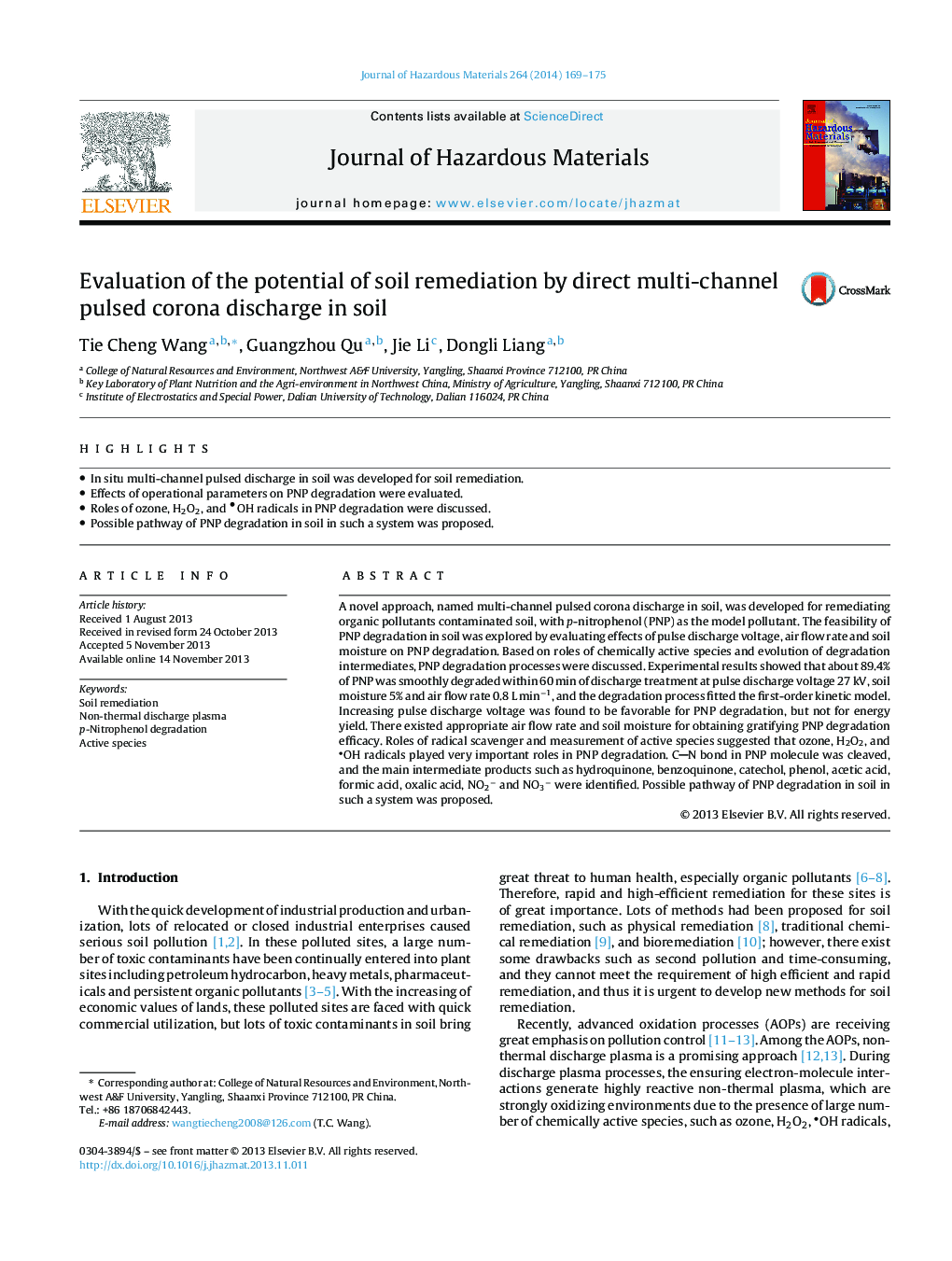| Article ID | Journal | Published Year | Pages | File Type |
|---|---|---|---|---|
| 577021 | Journal of Hazardous Materials | 2014 | 7 Pages |
Abstract
A novel approach, named multi-channel pulsed corona discharge in soil, was developed for remediating organic pollutants contaminated soil, with p-nitrophenol (PNP) as the model pollutant. The feasibility of PNP degradation in soil was explored by evaluating effects of pulse discharge voltage, air flow rate and soil moisture on PNP degradation. Based on roles of chemically active species and evolution of degradation intermediates, PNP degradation processes were discussed. Experimental results showed that about 89.4% of PNP was smoothly degraded within 60Â min of discharge treatment at pulse discharge voltage 27Â kV, soil moisture 5% and air flow rate 0.8Â LÂ minâ1, and the degradation process fitted the first-order kinetic model. Increasing pulse discharge voltage was found to be favorable for PNP degradation, but not for energy yield. There existed appropriate air flow rate and soil moisture for obtaining gratifying PNP degradation efficacy. Roles of radical scavenger and measurement of active species suggested that ozone, H2O2, and OH radicals played very important roles in PNP degradation. CN bond in PNP molecule was cleaved, and the main intermediate products such as hydroquinone, benzoquinone, catechol, phenol, acetic acid, formic acid, oxalic acid, NO2â and NO3â were identified. Possible pathway of PNP degradation in soil in such a system was proposed.
Related Topics
Physical Sciences and Engineering
Chemical Engineering
Chemical Health and Safety
Authors
Tie Cheng Wang, Guangzhou Qu, Jie Li, Dongli Liang,
